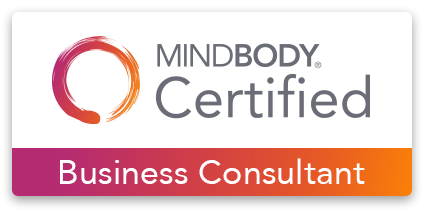Selecting the type of business entity for a new business can be tricky. While basic definitions of business entities can be found with a quick Google search, definitions don’t paint the full picture.
The business entity you choose can affect how you report your business income, when and how you pay taxes, and even how you pay yourself from the business. Today, we’ll shine a spotlight on an S-Corporation and walk you through how that business entity affects the owners of an e-commerce bakery.

Forming an S-Corporation
In our previous blog posts on business entities, we shared the story of Jane and Michael as they started and grew their online bakery business (dessert delivered right to your doorstep – yum).
Initially, they didn’t file any formation documents with their state, so their business operated as a partnership. As their business grew, their attorney told them they would probably benefit from the liability protection of an S-Corporation.
Jane and Michael, with the help of their attorney, incorporated their business and elected to be taxed as an S-Corporation. They named their new business J&M Bakery, Inc.
Reporting the Income:
The tax returns for an S-Corporation are similar to the tax returns filed by a partnership. The S-Corporation tax return (Form 1120S) will list all the revenues and expenses of the business and calculate the net profit (or loss).
The net profit (or loss) will be split between the shareholders and reported to them on a Form K-1. The shareholders then use the K-1 to prepare their personal returns and report their share of pass-through income. Let’s take a look at how it all works.
To establish their new S-Corporation, Jane and Michael shut down their existing partnership and used the $10,000 left in the bank account to open a new bank account in the name of J&M Bakery, Inc. Since they already had a good customer base, they were able to generate a net profit of $60,000 in their first year as an S-Corporation (not including salaries, discussed in Paying Themselves section below).
With their old partnership, Jane and Michael could decide how they wanted to split their partnership profit. They decided to split everything 50/50, but they had the ability to change that split if they wanted to.
With an S-Corporation, all profits must be split based on the ownership percentages of the shareholders. Since they each own an equal share of the business, they will each get a K-1 showing 50% of the profit, $30,000 each.
The S-Corporation does not pay any income taxes on the profit, which was also the case with their old partnership. The S-Corporation return is simply used to report the net income that will be reported on the shareholder’s individual tax returns.
Michael’s personal tax rate is 40%, and he is still eligible to take the Qualified Business Income deduction on his pass-through income. Since the QBI deduction allows him to reduce his business income by 20%, only $24,000 of his business profit is taxed. He ends up paying an additional $9,600 in taxes on his personal return due to this business income.
Jane’s personal tax rate is 30%, and she also takes the QBI deduction. The business income ultimately adds $7,200 in taxes to her personal return.
When the business was a sole proprietorship and a partnership, the income was subject to self-employment taxes. This is not the case with an S-Corporation. But, keep in mind the officers are required to pay themselves a reasonable salary for working in the business (more on this below).
Paying Themselves:
So we’ve already established that owners in an S-Corp are not required to pay self-employment taxes on profit (i.e., social security and medicare). But, the requirement of owners to pay themselves a reasonable salary means that some amount of social security and medicare taxes are owed – typically paid through paycheck withholding.
The S-corporation owners can decide how much to pay themselves for the work they do (wages) and how much to categorize as business profit. Some S-Corp owners may be tempted to pay themselves minimal wages to reduce their social security and medicare taxes. But that’s not permitted.
The IRS requires officers of an S-Corporation to pay themselves a “reasonable” salary for the work they do in the business. The definition of “reasonable” is confusing and determining how to calculate it may be one of the greatest difficulties of operating as an S-Corporation.
To keep it simple, we will assume that Jane and Michael decide to pay themselves annual salaries of $36,000 each.
When they had their partnership, Jane and Michael would pay themselves their profit distributions and guaranteed payments by simply writing a check to themselves. However, wages are a little more complicated, so Jane and Michael hire a payroll company to handle their payroll processing.
Jane and Michael decide to pay themselves through payroll each month. Since their annual salaries are $36,000, they receive wages of $3,000 per month. But, just like when they had real jobs before starting their business, some taxes are withheld from their paychecks by the payroll company.
Jane and Michael can decide how much they want to be withheld for federal and state income taxes, but social security and medicare (along with some other payroll taxes) are withheld automatically.
The payroll company sends Jane and Michael their net paychecks and also sends the withheld income and payroll taxes to the proper government agencies. The payroll company also files payroll tax returns each quarter to report all of these payments. At the end of the year, Jane and Michael receive W-2s showing their $36,000 in wages and any federal and state taxes that had been withheld.
Paying the Taxes:
Previously, Jane and Michael were making quarterly estimated tax payments when they had their partnership. Since they are now paying themselves through payroll, those payments are automatic and more frequent via the tax withholdings from their paychecks.
Jane and Michael could still make estimated tax payments if they choose. But, they decide it’s easier to pay their taxes through payroll. That way, they don’t have to remember the quarterly due dates or set aside the money for those tax payments.
As we mentioned, Jane and Michael are each going to get a K-1 showing a profit of $30,000. They are also going to get a W-2 showing wages of $36,000. When they calculate how much to withhold from their paychecks, they should take into account both amounts to estimate how much they should pay in taxes.
Keep in mind, the tax withholdings are only an estimate of how much Jane and Michael will owe at the end of the year (just as the business profit is estimated during the year). At the end of the year, when they file their tax returns, they might find that they have paid too much (resulting in a refund) or haven’t paid enough (requiring them to make a payment with their return).
Bottom Line
At the end of the day, an S-Corporation takes more work to form than a partnership but can potentially offer the owners some liability protection. An S-Corp is sometimes referred to as a “pass-through” entity, as the profit or loss is “passed through” to the business owners and reported on their personal tax returns.
The S-Corp itself is not a separate taxable entity but files an informational tax return to inform the government/IRS what income the owners received and will ultimately pay taxes on.
For more information on S-Corporations, visit Understanding S-Corps from nolo.com. Stay tuned for another edition of our business entity blog series to dive into LLCs.
You might also be interested in:
Business entity series part 1: sole proprietor








